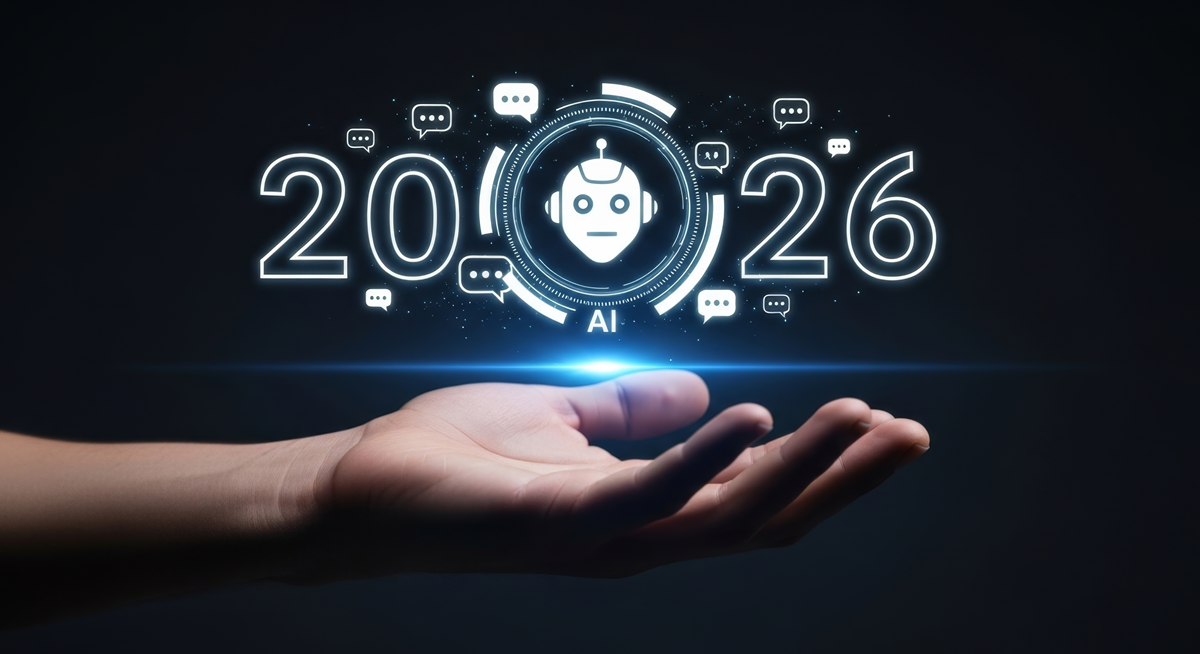November 26, 2025
Microfeedback, Automated Conversations and RCS: 2026 Predictions Across the Customer Experience Sphere

As the news email in-tray and slew of CX events slows down for Thanksgiving and the holidays, they are replaced by the pitter-patter of not-so-tiny predictions. Ideas of how 2026 will turn out, and what businesses need to do to change the world of customer experience for the better.
In the first of a series to take CXM into the new year, we’re gathering the best, most challenging, insightful or curious for the industry. And, we welcome responses and further ideas on where the big (and small) ideas for CX will take us. First up are the leaders of technology and CX focused businesses with some progressive thoughts
Tim Waterton, CRO of HappyOrNot on the Need for Motion
“2026 will be the year customer experience moves from insight to impact. After years of collecting data and chasing dashboards, the focus now shifts to execution – turning feedback into tangible change. AI will accelerate this shift, but the real winners will balance automation with human judgment. From Gen Z’s mobile-first expectations to the resurgence of the high street, the message is clear: act fast, stay grounded, and keep it human. Because in 2026, success in CX won’t come from measurement alone – it’ll come from what you do with it.”
Tim highlights that 2026 could be the year of:
- Actionable CX data: “We’ve collected enough signals. This is the year leaders wire feedback into daily decisions, frontline workflows, and P&L. If experience data doesn’t drive visible change within 30 days, it’s not insight – it’s theatre.”
- Companies address their CX execution debt: “Most companies don’t lack insight – they lack motion. The gap between knowing and doing has become CX’s biggest liability. In 2026, the leaders will close the loop fast with microfeedback at key moments, automated routing to owners, and simple playbooks that prove lift. Those who don’t will keep measuring what they never fix.”
- Value clarity will beat discounting and gamification enters the micro-feedback space: “Reduce friction, fix the top three pain points fast, and make those trade-offs transparent to all. Use microfeedback to catch value anxiety in the moment, then adjust your service, offer, or communications before the customer defects. In 2026, it’s about action, not charts – because retention will outweigh expensive acquisition once again. “Zero-party data like feedback grows when customers see immediate utility – faster service, smarter recommendations, tangible perks. In 2026, expect to see gamification enter the microfeedback space, turning participation into small wins and recognition moments. For mobile-native Gen Z, those rewards delivered through the device they live on will drive both engagement and a richer flow of zero-party data.”
Sören Stamer, CEO and Co-Founder of CoreMedia Considers Automated Conversations
2026 will see customer interaction shift into digital, automated conversations. Brands that learn to communicate effectively with both humans and AI agents will gain a decisive competitive edge. Instant checkout in AI-driven environments will become a game-changer; content, context, and trust determine where purchases happen.
Key points for agentic commerce ad AI interfaces :
- New conversational interfaces — AI agents and AI browsers — redefine how people search and buy. Decisions increasingly occur inside chat interfaces rather than traditional webshops
- Digital assistants will act on behalf of consumers, sending targeted, often complex queries and making purchase decisions for their users. Brands must create transparent, machine-readable, trustworthy content to be selected by these agents.
- Autonomous purchasing agents are still early-stage, but will follow the same adoption curve as early e-commerce: initial skepticism, then mass trust.
- Brands must build reputation not only with humans, but with AI agents — through GEO (Generative Engine Optimization), clean data, transparency, and brand authority.
- Visibility in GEO becomes as crucial as SEO: content must be reference-ready, structured, and reliable.
Values-Driven Support & Customer Experience require that AI doesn’t replace humans, but it ensures that human support appears exactly where empathy creates the most value. Loyalty is built through relevance — not through discounts.
- The lines between marketing, sales, and service blur. What matters in 2026 is the seamless experience. Successful brands orchestrate data and AI to create fluid, continuous journeys.
- Values-driven support means using human resources where they matter most: no one needs a consultant to buy a candle — but kitchen buyers do.
- Companies spend billions on advertising while only ~2% of visitors convert. The bigger opportunity lies in activating the “98%”: hesitant users, drop-offs, and undecided buyers.
- Forty-two percent of customers abandon purchases due to too many choices. The “Paradox of Choice” is measurable.
- AI identifies high-value leads and offers them one-click access to human experts. This targeted empathy drives trust and conversion — not blanket automation.
Chris Angus, VP for CPaaS and CX Expansion at 8×8 Thinks RCS Will Take Off Like A Rocket
“A lot of people thought 2025 would be the year of Rich Communication Service (RCS), especially after Apple enabled it in the fall of ‘24, but these things take time. Yes, RCS and Rich Business Media through SMS could rival WhatsApp, but we need all the mobile networks to support it.
“Once the infrastructure is in place, which always takes time, and carriers are supporting it, you’re going to see RCS take off. I think we’ll see a big shift. I think it really will rival WhatsApp, Viber, Line and Zalo, and those kind of tools.”
SMS rates in the UK and US are cheap as chips so RCS is going to be a really cost effective way of engaging with customers, without the need for a third party application.”
We’ll share more predictions and posts over the coming weeks, and if you want to chip in, get in touch.




